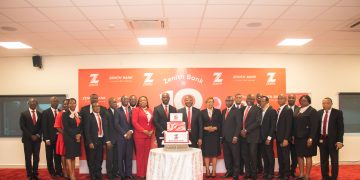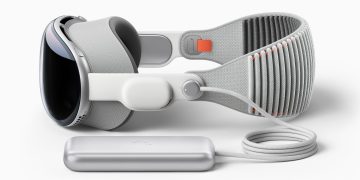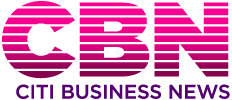Inflation
November, 2016 Inflation
Ghana’s inflation for November 2016 reached 15.5 percent.
This represents a 0.3 percent down from the 15.8 percent recorded in October this year.
According to the Ghana Statistical Service, the monthly change rate in inflation for November also declined from 1.4 to 0.8 percent between October and November this year.
The figure is also the lowest in the last twelve months.
The food and non-alcoholic beverages group recorded an inflation of 9.3 percent in November.
While inflation for the non-food group reached 18.7 percent.
The GSS attributed the marginal decline in inflation to the drop in prices of some major components of inflation.
Mineral water, soft drinks, fruits (14.1%); beverages (14%); fish and sea food (13.4%); meat and meat products (13.3%) as well as sugar, jam, honey and chocolates (12.5%), all recorded inflation above the sector’s average of 9.3 percent.
Also, transport (27.8%), education(25.7%), recreation and culture (21%), furnishings, household equipment and routine maintenance (20.3%), housing, water, electricity, gas (20.3%) and health (20.0%), recorded inflation above the non-food average of 18.7 percent.
The Greater Accra region’s 18.1 percent was the highest inflation above the national average; followed by the Ashanti region’s 15.8 percent.
But the Volta region recorded the lowest inflation of 13.1 percent.
October, 2016 Inflation
Ghana’s Inflation for October 2016 reached 15.8 percent.
The figure represents a 1.4 percent reduction from the 17.2 percent recorded in September this year.
This is higher compared to the monthly change rate for September which was 0.2 percent.
According to figures released by the Ghana Statistical Service, inflation for the food and non-alcoholic beverages reached 8.7 percent.
The figure is 0.3 percentage point lower than the rate recorded in September 2016.
Also, seven subgroups recorded inflation rates higher than the group’s average of 8.7 percent.
These included; coffee and cocoa – 15.1%; mineral water, soft drinks, fruits – 15.1%; sugar, jam, honey, chocolate – 13.6%; meat and meat products – 13.3%; food products – 11.7%; fruits – 10.4% and oils & fats – 9.7%.
Meanwhile inflation for the non-food component for October 2016, reached 19.4 percent, lower than the 21.6 percent recorded in September this year.
Six subgroups of the non-food component recorded inflation rates higher than the group’s average rate of 19.4 percent.
These included; Transport (27.2%); Education (25.8%); Recreation and culture (24%); housing, water, electricity, gas and other fuels (23.1%); furnishings, household equipment and routine maintenance (22.2%) and health (20.9%).
Among the regions, the Greater Accra region recorded the highest inflation rate of 18.7% while the central region recorded the least of 12.9%.
The consumer price index measures the change over time in the general price level of goods and services that households acquire for the purpose of consumption, with reference to the price level in 2012, the base year which has an index of 100.
September 2016 Inflation
Inflation for September 2016 went up to 17.2 percent.
This represents a 0.3 percent increase compared to the 16.9 percent recorded in August this year.
The monthly change rate between August and September was 0.2 percent; down from the negative 0.6 percent recorded in August 2016.
Figures released by the Ghana Statistical Service (GSS) also indicated that inflation for the food and non-alcoholic beverages was 9 percent whilst inflation for the non-food group went up to 21.6 percent.
Government Statistician, Dr. Philomena Nyarko explained that the increased inflation on imports also contributed to the high figures.
“The increase was basically as a result of the base drift effect; the index in the September 2015 was lower compared to the index for September 2016. Also, inflation rate for imported items went up from 17.3 percent to 18.7 percent in September 2016,” she said.
The main price drivers for the food inflation category were mineral water, soft drinks, fruit and vegetable juices (16.2%); coffee, tea and cocoa (16%); meat and meat products (13.1%); food products (11.8%); Oils and facts (10.3%); milk, cheese and eggs (9.6%).
The inflation rate for the non-food inflation were largely influenced by education (32.5%), housing, water, electricity, gas and other fuels (28%); recreation and culture (27.6%).
Others were transport (27.3%), clothing and footwear (23.2%) and furnishings; household equipment and routine maintenance (23%).
Meanwhile the Greater Accra region recorded the highest year-on-year inflation rate of 20.8 percent while the Central region recorded the lowest inflation rate of 13.8 percent.
The consumer price index measures the change over time in the general price level of goods and services that households acquire for the purpose of consumption, with reference to the price level in 2012, the base year, which has an index of 100.
August, 2016 Inflation
Ghana’s consumer price inflation has increased marginally to 16.9 percent in August 2016.
The figure moved up from 16.7 percent recorded in July 2016.
According to the Ghana Statistical Service, the monthly change rate for August was negative 6 percent compared to the 0.9percent recorded in July.
The increase in inflation was occasioned by some base drift effects in some non food items.
The increasing prices of imported items also contributed to the increase in inflation for the period.
Two regions; Greater Accra and Ashanti, recorded higher inflation rate than the national average of 16.9 percent.
The year on year non food inflation rate for August 2016 was 21.5 percent compared with the 21.2 percent recorded in July 2016.
Also, the year on year food inflation rate for August 2016 stood at 8.5 percent compared with 8.6 percent for July 2016.
Meanwhile In August 2016 the year on year inflation rate for imported items of 17.3 percent was 0.6 percentage points higher than that of locally produced items which was 16.7 percent.
The main price drivers for food inflation rate were Vegetables (11.5%), Minerals water, soft drinks, fruits and vegetable juices (10.6%), Oils and fats (10.1%), Coffee, tea and cocoa (9.7%0, Meat and meat products (9.6%) and Fruits (9.1).
The Greater Accra Region recorded the highest year –on-year inflation rate of 20.1percent, followed by the Ashanti region with 18.5 percent while the Upper East Region recorded the lowest inflation rate of 11.8 percent.
July, 2016 Inflation
The Consumer Price Inflation (CPI) for July 2016, declined sharply to 16. 7 percent from the 18.4 percent in June 2016.
The monthly change rate was 0.9 percent in July 2016 compared to 1.3 percent recorded in June this year.
According to the Ghana Statistical Service (GSS), food inflation was 8.6% in July same as what was recorded in May 2016.
[contextly_sidebar id=”PHNSIODAYkbciFBuSgWg7RgEiwBBDdLv”]The year on year non-food inflation rate however declined to 21. 2percent from 24.1 percent between the one month period.
The consumer price index measures the change over time in the general price levels of goods and services that households require for the purpose of consumption.
Government Statistician; at the Ghana Statistical Service Dr. Philomena Nyarko explained to Citi Business News that a base drift effect, cedi stability and seasonality effect on food pricing accounted for the sharp decline in inflation this time.
Meanwhile, the inflation rate for imported items decreased to 15.2 percent in July 2016, from the 17.3 percent recorded in July 2016 while inflation for locally produced items was however 2.1 percent higher than the imported items in July.
The main price drivers for the non food inflation rate were education (35.4%) Recreation and culture (28.3%), transport (25.4%) housing, water, electricity, gas and other fuels (25.4%) clothing and foot wear (24.3%) and furnishing households equipment and routine maintenance (23.0%).
The Figures released by the GSS today also showed that two regions Greater Accra and Ashanti region recorded the highest inflation rate higher than the national average of 16.7%.
Ghana’ capital region Greater Accra recorded the highest inflation of 21.3% followed by Ashanti region with 18.0% while the Upper East region recorded the lowest inflation rate of 10.0% for July this year.
June, 2016 Inflation
The Consumer Price Inflation (CPI) for June, declined marginally to 18.4% from 18.9% in May 2016.
The monthly change rate was 1.3% in June 2016 compared to 1.1% recorded in May this year.
According to the Ghana Statistical Service (GSS), food inflation went up to 8.6% in June compared to 8.5% in May 2016.
The consumer price index measures the change over time in the general price levels of goods and services that households require for the purpose of consumption.
The non food inflation rate however declined from 25 to 24.1 percent between the one month period. Meanwhile, the inflation rate for imported items increased to 27.1% in June, from the 18.5 percent recorded in May 2016.
The main “price drivers” for the non-food inflation rate were Transport (40.3%), education (33.3%), housing, water, electricity, gas and other fuels (32.8%) and Recreation and Culture (27.7%).
Inflation for locally produced items was however 1.8% higher than the imported items in June.
Figures released by the GSS also showed that the Ashanti region recorded the highest combined food and non food inflation rate of 11.1%.
This was followed by Greater Accra with an inflation of 9.4%.
On the contrary, the Upper East region recorded the lowest combined food and non-food inflation rate of 6.0% for June this year.
May, 2016 Inflation
Ghana’s inflation for the month of May 2016, went up marginally to 18.9%.
The rate increased by 0.2% from the 18.7% in April 2016.
The monthly change rate for May was 1.1%.
According to the Ghana Statistical Service, elements of the non-food group of inflation namely; transport, housing, water, electricity, education and recreation among others accounted for the increase.
The food and non-alcoholic beverages group recorded a year-on-year inflation rate of 8.5 percent. This represented a 0.1 percentage point higher than the 8.4 percent recorded in April 2016.
The non-food group on the other hand recorded a year-on-year inflation rate of 25 percent in May 2016.
Four sub-groups recorded year-on-year inflation higher than the group’s average rate of 25 percent.
Transport recorded the highest inflation rate of 40.9 percent, followed by housing,water, electricity,gas and other fuels with 35.7 percent, education 32.3 percent and recreation & culture with 27.9 percent.
At the regional level, the year-on-year inflation rate ranged from 15 percent in the Upper East region to 22.6 percent in the Greater Accra region.
Two regions; Greater Accra and Ashanti recorded inflation rates above the national average of 18.9 percent.
Inflation for the month of April had declined from 19.2 percent recorded in March 2016.
Similarly the non-food inflation components accounted for the decrease in April.
The consumer price index measures the change over time in the general price levels of goods and services that households require for the purpose of consumption.
April, 2016 Inflation
Ghana’s inflation for the month of April 2016 sharply declined to 18.7 percent compared with the 19.2 percent recorded in March 2016.
According to the Ghana Statistical Service, non food inflation, utility prices, transport and education accounted for the decrease.
The year on year food inflation rate for April 2016 was 8.8 percent compared with the 8.3 percent recorded in March 2016.
In February, 2016 the GSS announced that consumer prices in Ghana increased to 19 percent year-on-year in January of 2016, following a 17.7 percent rise in the previous month.
It was the highest inflation rate since August of 2009, mainly boosted by prices of fuel, food and utilities after the country raised tariffs for electricity and water in December 2015, to increase competition in the sector.
Year-on-year, prices of housing, water, electricity, gas and other fuels rose faster by 45.5 percent ; transport prices went up 30.8 percent and food and non-alcoholic beverages increased 8.2 percent.
Prices went up at a slightly slower pace for recreation and culture (+25 percent); furnishing, household items (+24.5 percent ); education (+22.2 percent); clothing, footwear (+21.4 percent) and hotels and cafes (+18.5 percent).
On a monthly basis, consumer prices went up by 4.6 percent, compared to a 1.1 percent increase in the previous month.
Inflation Rate in Ghana averaged 17.13 percent from 1998 until 2016, reaching an all-time high of 63 percent in March of 2001.


In Ghana, the most important components in the Consumer Price Index (CPI) are Food and Non Alcoholic Beverages (43.6 percent of total weight); Housing, Water, Electricity, Gas and Other Utilities (9.5 percent) and Clothing and Footwear (8.9 percent).

Transport account for 7.2 percent of total index, Miscellaneous Goods and Services for 7 percent, Hotels, Cafés and Restaurants for 6 percent and Furnishing and Household Equipment for 4.6 percent.
Education represents 3.8 percent of total weight, Recreation and Culture another 2.7 percent and Communication 2.6 percent.
Health accounts for the remaining 2.4 percent and Alcoholic Beverages, Tobacco and Narcotics 1.6 percent.


































